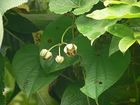Note: This is a project under development. The articles on this wiki are just being initiated and broadly incomplete. You can Help creating new pages.
Difference between revisions of "Holostemma adakodien - Arkapushpi, Holostemma"
(→How to plant/cultivate) |
(→References) |
||
| Line 69: | Line 69: | ||
==References== | ==References== | ||
<references> | <references> | ||
| − | <ref name="chemical composition">[http://www.medicinalplantsindia.com/jivanti.html | + | <ref name="chemical composition">[http://www.medicinalplantsindia.com/jivanti.html Chemical contents]</ref> |
| − | <ref name="Leaf">[https://indiabiodiversity.org/species/show/229953 " | + | <ref name="Leaf">[https://indiabiodiversity.org/species/show/229953 Diagnostic]</ref> |
| + | <ref name="Cultivation details">[http://vikaspedia.in/agriculture/crop-production/package-of-practices/medicinal-and-aromatic-plants/holostemma-ada-kodien Cultivation details]</ref> | ||
| + | |||
</references> | </references> | ||
Revision as of 14:21, 7 June 2019
Arkapushpi is a genus of Flowering plants formerly belonging to the plant family Asclepiadaceae, now considered to be part of the Apocynaceae. The genus was first described in 1810. As presently constituted, the genus contains only one known species, Holostemma ada-kodien, native to southern Asia (China, Nepal, Pakistan, Kashmir, India, Sri Lanka, Myanmar, Thailand).
Contents
- 1 Uses
- 2 Parts Used
- 3 Chemical Composition
- 4 Common names
- 5 Properties
- 6 Habit
- 7 Identification
- 8 List of Ayurvedic medicine in which the herb is used
- 9 Where to get the saplings
- 10 Mode of Propagation
- 11 How to plant/cultivate
- 12 Commonly seen growing in areas
- 13 Photo Gallery
- 14 References
- 15 External Links
Uses
Pregnancy care, Eye care, Skin diseases, Ulcers, Wounds, Gonorrhoea, Diarrhea, Cough, Loss of appetite, Stomachache, Ulcers.
Parts Used
Chemical Composition
Alpha-amyrin, lupeol and beta-sitosterol[1]
Common names
| Language | Common name |
|---|---|
| Kannada | |
| Hindi | Chhirvel |
| Malayalam | Ada kodien |
| Tamil | Palay kirai |
| Telugu | Palagurugu |
| Marathi | NA |
| Gujarathi | NA |
| Punjabi | NA |
| Kashmiri | NA |
| Sanskrit | Jivanti, Arkapushpi |
| English | Holostemma |
Properties
Reference: Dravya - Substance, Rasa - Taste, Guna - Qualities, Veerya - Potency, Vipaka - Post-digesion effect, Karma - Pharmacological activity, Prabhava - Therepeutics.
Dravya
Rasa
Guna
Veerya
Vipaka
Karma
Prabhava
Habit
Identification
Leaf
| Kind | Shape | Feature |
|---|---|---|
| Large | Triangle | leaf's Margin is Entire and Venation-Cross venulated. leaves 7-15 cm length and 5-10 cm breadth, top of the leaf is smooth and bottom part is hairy |
Flower
| Type | Size | Color and composition | Stamen | More information |
|---|---|---|---|---|
| Peduncled cymes | 10–15 cm long | Yellow-white | peduncles shorter than the petiole, stout; pedicels 1.5 cm long; calyx lobes ovate, 4 mm long; corolla 2.5 cm across, campanulate, pale purple, lobes 8 x 6 mm, ovate, obtuse |
Fruit
| Type | Size | Mass | Appearance | Seeds | More information |
|---|---|---|---|---|---|
| oblong pod | Thinly septate, pilose, wrinkled | {{{6}}} |
Other features
List of Ayurvedic medicine in which the herb is used
Where to get the saplings
Mode of Propagation
How to plant/cultivate
The plant can be propagated through seeds. Matured seeds are collected from the plant during December–January before they disperse. Seeds are cleaned, dried, and stored for sowing. However, fruit set is generally less than 10% in this crop, which is a major constraint for large-scale cultivation through seeds. The crop can also be propagated by vegetative means through root and stem cuttings. [3]
Commonly seen growing in areas
Scrub jungles, Deciduous forests, Plain area
Photo Gallery
References
External Links
- Ayurvedic Herbs known to be helpful to treat Pregnancy care
- Ayurvedic Herbs known to be helpful to treat Eye care
- Ayurvedic Herbs known to be helpful to treat Skin diseases
- Ayurvedic Herbs known to be helpful to treat Ulcers
- Ayurvedic Herbs known to be helpful to treat Wounds
- Ayurvedic Herbs known to be helpful to treat Gonorrhoea
- Ayurvedic Herbs known to be helpful to treat Diarrhea
- Ayurvedic Herbs known to be helpful to treat Cough
- Ayurvedic Herbs known to be helpful to treat Loss of appetite
- Ayurvedic Herbs known to be helpful to treat Stomachache
- Herbs with Rhizome used in medicine
- Herbs with Latex used in medicine
- Herbs with common name in Hindi
- Herbs with common name in Malayalam
- Herbs with common name in Tamil
- Herbs with common name in Telugu
- Herbs with common name in Sanskrit
- Herbs with common name in English
- Habit - Climber
- Index of Plants which can be propagated by Seeds
- Herbs that are commonly seen in the region of Scrub jungles
- Herbs that are commonly seen in the region of Deciduous forests
- Herbs that are commonly seen in the region of Plain area
- Herbs
- Ayurvedic herbs that don't have flower, fruit and leaf photos
- Ayurvedic herbs that don't have seed photos
- Apocynaceae



